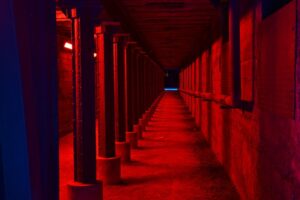Red Light Areas of Punjab shed light on the hidden corners where marginalized individuals find themselves entangled in the shadows. These red light areas, including Heera Mandi in Ludhiana, Chungi Mohalla in Amritsar, Ganga-Jamuna in Mansa, and Shapur-Kanjari near Amritsar, are a testament to the socio-cultural complexities within the state. In these Red Light Areas of Punjab, women engaged in sex work face a multitude of challenges. The historical significance of Heera Mandi cannot be overlooked, as it holds a prominent place in the annals of Punjab’s performing arts.

Punjab, a state in northern India, is renowned for its rich culture, vibrant traditions, and agricultural abundance. However, alongside its picturesque landscapes, Punjab harbors a lesser-known aspect—the presence of red-light areas. This article aims to shed light on the existence of these areas, exploring their historical context and providing an overview of some of the famous red-light areas in Punjab.
See the List of Famous Red Light Areas of Punjab
- Heera Mandi, Ludhiana: One of the most well-known red-light areas in Punjab is Heera Mandi, located in Ludhiana. Historically, Heera Mandi was a famous center for traditional performing arts, including dance and music. Over time, it transformed into a hub for commercial sex work. Despite its controversial nature, Heera Mandi continues to draw curiosity due to its historical significance and the resilience of the women who work there.
- Chungi Mohalla, Amritsar: Amritsar, the spiritual and cultural capital of Punjab, is home to Chungi Mohalla, a prominent red-light area. Situated near the city’s railway station, Chungi Mohalla has a long-standing reputation as a center for commercial sex work. Despite efforts to curb the practice, Chungi Mohalla persists as a part of the city’s social fabric, raising questions about the socio-economic conditions that perpetuate its existence.
- Ganga-Jamuna, Mansa: Ganga-Jamuna, located in the town of Mansa, is another red-light area in Punjab. It derived its name from the famous Ganges and Yamuna rivers, symbolizing the dual nature of the place. Ganga-Jamuna is an example of a red-light area that has faced local opposition and attempts at eradication. However, due to various factors, it remains active, raising issues related to livelihoods, exploitation, and the need for comprehensive social support.
- Shapur-Kanjari, Amritsar: Shapur-Kanjari, situated near the border town of Amritsar, has a unique historical background. In the past, it served as a rest stop for travelers and gained notoriety for its connection to the Devadasi system. Today, Shapur-Kanjari is known for its red-light area, where women engage in sex work. The place presents a complex interplay of historical context, socio-cultural dynamics, and the challenges faced by the individuals involved.
Conclusion:
The red-light areas in Punjab, such as Heera Mandi, Chungi Mohalla, Ganga-Jamuna, and Shapur-Kanjari, exist as a stark reminder of the complexities within society. These areas raise questions about the social and economic factors that contribute to their persistence and the well-being of the individuals involved. Understanding and addressing the underlying issues is crucial for fostering a more inclusive society that seeks to uplift marginalized communities and provide support for those engaged in sex work. It is essential to approach these topics with empathy, respect, and a commitment to finding sustainable solutions for the individuals affected by these circumstances. Also find red light places in Chandigarh.
